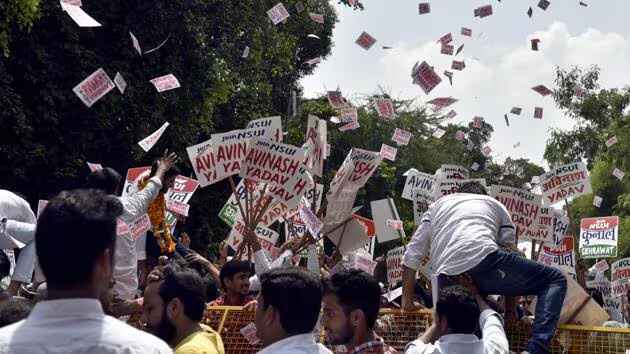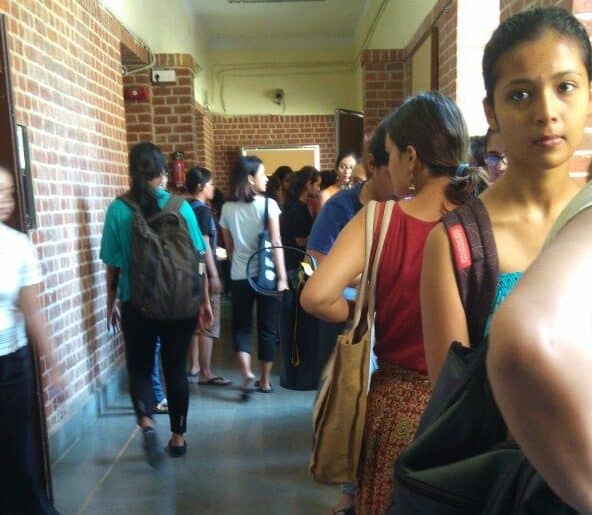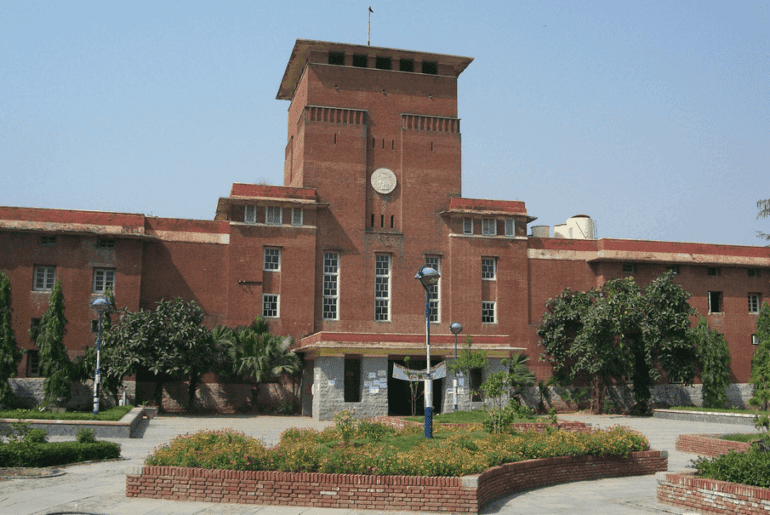Characteristic of DUSU elections, the DUSU elections for the session 2024–25 were also a display of money and muscle power, tearing up of nomination forms, and a rather irreverent attitude towards the Lyngdoh Committee guidelines for the elections. The emergence of identity-based parties, an SFI-AISA alliance, and the Delhi HC directive to postpone counting of votes augur major changes. Despite this, the voter turnout remained abysmally low at 35.2%, the lowest of the past 4 elections, and from what students claim, this reduction seems to be manufactured by the administration.
Slated to start its counting post the 21st of this month after the court hearing scheduled on the same date, this year’s DUSU elections were different from all previous elections. From the alliance between the Left and the emergence of identity-based parties like Ambedkar Students’ Association (ASA) and Fraternity Movement in DUSU to the last moment introduction of special buses, the inauguration and removal of a miniature Ambedkar statue by the DUSU, and eleventh hour changes in presidential candidates of major parties, this election saw it all and was, by far, one of the most happening elections of all times. Despite these developments, it seems unlikely to have such a low voter turnout. Though the hostile nature of the campus during elections and the rather short time frame for voting discourage a lot of students, especially female students, and thus, voter turnout appeared unnaturally low.
According to Hindustan Times, the voter turnout for this year was 35.2%. It is important to remember how the voter turnout is calculated in order to understand the trends for this election, as the figure measures the number of votes cast as a percentage of the eligible voters rather than the number of voters who come to their institutions to cast votes. It is the gap between the number of eligible voters who show up on the day of voting and the number of votes cast, reflecting the number of voters who were unable to cast their vote despite showing up on the day of elections. While this gap has emerged in the previous elections too, it seems to have widened rapidly in this election, making it seem ‘manufactured’ by the administration to decrease the number of votes cast, as per the claims of the students. This gap was exacerbated by issuing last-minute notices in several colleges that set out the eligibility criteria to vote in the elections and made students stand in long queues in administrative offices on the day of voting, to update their ID cards that took hours, leading to situations where the voters were unable to cast their vote past, despite their early arrival in college. Further, in several colleges, only a handful of polling booths were allotted for the entire institution despite the availability of more polling booths, making 1000s of eligible voters poll from a single booth. These booths were also changed at the last moment, creating confusion around the venue for voting.
A third-year student from Ramjas College notes:
I couldn’t vote because I was 2 minutes late. There was a big jam on the campus, and no auto was able to make it through, and as soon as I got to the college gate, they didn’t let us in. I waited there for a while to enter, and as soon as I did, there was so much confusion with the venue of the voting; some said the auditorium, and some said other classes. When I finally found the classroom, they didn’t let me join the line as I was 2 minutes late. The faculty was rude, and they were shouting at us without listening to a word we said. I wasn’t the only one who was left out, and there were a lot of other students as well.
Though several colleges had sent out last-minute notices about verification of fee slips and upgradation of ID cards for all voters, in stark contrast, it turns out that at several institutions, the faculty was not checking whether the ID cards of students had been upgraded.
Another third-year student from Ramjas notes:
Though the college had notified students to verify their ID cards, several students, including me, were only asked about our courses and year of study and were allowed to vote even regardless of whether our ID cards were updated or not. The faculty members at the polling booths were not following the rules as a lot of students were in the queue to vote. While I was voting, the DUSU presidential candidate of a major political party entered our booth and was openly campaigning, and no faculty members present in the booth stopped him, despite this being a clear violation of the guidelines. They rather allowed him to speak.
Though bureaucratic mismanagement and chaos are natural in such a large election, a lot of the aforementioned incidents seem deliberate and conscious attempts to dissuade students from voting. Even while the students were verifying their ID cards, the candidates were openly campaigning and helping those in queue using their contacts in the college administration to get their ID cards verified faster to garner more votes. This ensures that only a selective and chosen crowd gets to vote in the elections, and a large crowd of students is not allowed to exercise their right to vote despite their attempts to do so.
A student from Miranda House notes the manufactured chaos in the order of voting in the elections:
Students remember the ballot numbers of each candidate, and that’s how polling booths are supposed to work. In Miranda House, in the initial phase when the elections started, the order of positions in the polling booth was informed to us as President, followed by Vice President, Secretary, and the Joint-Secretary but later on, as the elections went forward, they altered the position. The Joint-Secretary’s position was moved to the first, and the President’s position was moved to the last in the polling booth which caused a lot of confusion among students because that is not how you come memorising the numbers.
Though bureaucratic mismanagement led to a further decrease of voter turnout, the developments in this year’s elections will have a long-term impact. With the strict action taken by the Delhi High Court to ensure that counting doesn’t begin until public defacement is removed, it could potentially tamper with the results but might result in lesser defacement and a violation of rules next year. Further, the directive to ensure 50% reservation of women in DUSU would also have a positive impact. In terms of party politics, sudden changes in candidates of major parties post-nominations and the withdrawal of community support following the same might lead to a reflection about the role of caste politics in DUSU. The emergence of identity-based parties and the alliance among the Left would also ensure that the ABVP-NSUI binary is challenged in the upcoming years.
Read Also: Under the Shadow of DUSU Elections: A Stage for Sexual Harassment and Caste-based Politics
Picture Credits: Nehal for DU Beat
Vedant Nagrani




